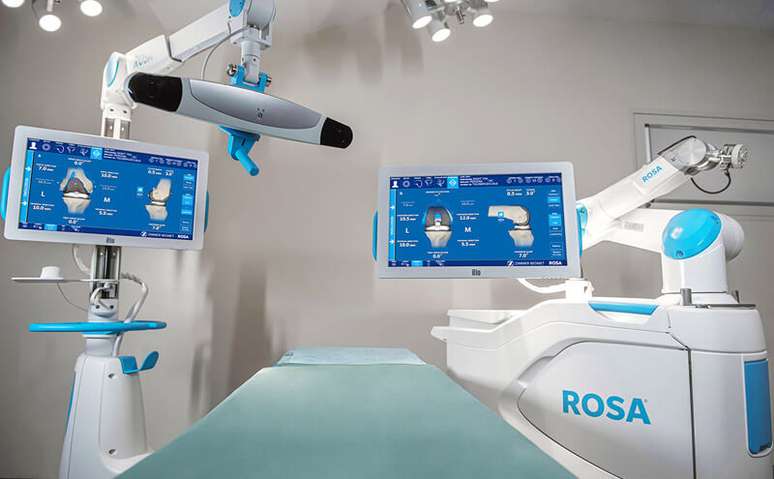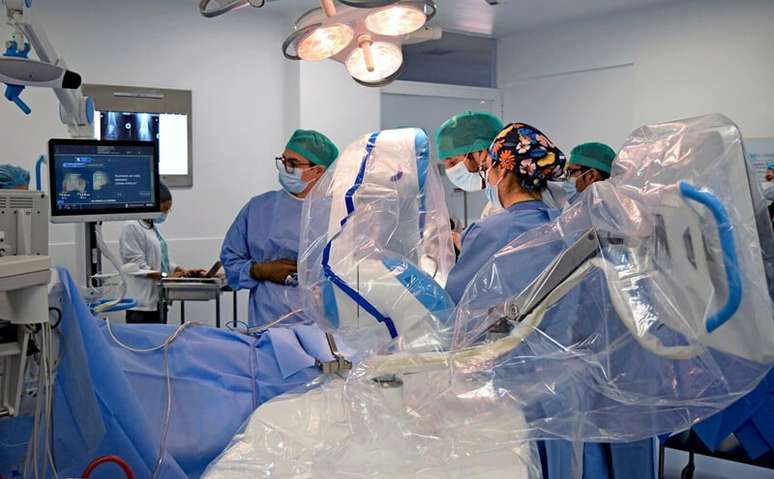Conventional surgery or robotic surgery? Find out the main differences between the two types of procedures
html[data-range=”xlarge”] figure image img.img-347c840cbcad8a89429d13e99e6ee906ygpnsjk2 { width: 774px; height: 479px; }HTML[data-range=”large”] figure image img.img-347c840cbcad8a89429d13e99e6ee906ygpnsjk2 { width: 548px; height: 339px; }HTML[data-range=”small”] figure figure img.img-347c840cbcad8a89429d13e99e6ee906ygpnsjk2, html[data-range=”medium”] figure image img.img-347c840cbcad8a89429d13e99e6ee906ygpnsjk2 { width: 564px; height: 349px; }
As technology continues to be linked to constant updates and improvements in the area of health, new techniques and solutions have contributed exponentially to improve the quality of life and well-being of the Brazilian population.
In the field of surgical procedures, for example, the advent of robotics has allowed increasingly clear gains, both for patients who have to undergo surgery and for medical teams, who rely on such innovations to increase the percentage of success and optimize the dedicated time. to these activities.
However, many people still have concerns about how these robot-assisted procedures would be performed. After all, do these machines work by themselves? Why are they important? What are the main differences between traditional and robotic surgery?
Procedure with a robotic platform
As several specialists point out, the support of robotic platforms for performing operations such as knee arthroplasty – a solution for patients suffering from severe osteoarthritis and requiring knee joint replacement surgery with orthopedic prostheses – has allowed a clear evolution in the precision and efficiency of these surgeries, which are now performed in a much more personalized way, according to the unique anatomy of each patient.
According to Mauro Meyer, orthopedic specialist in knee surgery at the Moinhos de Vento Hospital, in Porto Alegre-RS, although knee replacements have excellent results, the greatest difficulty in conventional surgical interventions is obtaining the exact alignment of the components during procedure, a barrier that has been overcome with the help of the robot.
“First, the doctor makes a series of calculations, for example, the rotational movements of the hip, knee, ankle. The robot adds and crosses these data with those of the imaging exams and analyzes how the ligaments, tendons and muscles are doing. With the precision of the robotic system we have had shorter hospitalization times, the patient moves the knee more easily and this causes less pain in the postoperative period, less use of analgesics, greater comfort so that the patient can go home faster. and greater longevity of this prosthesis,” he comments.
The benefits of robotic precision
Benefits and positive experiences also shared by Afonso Paulo Almeida Magalhães Neto, orthopedic and traumatologist, specialist in knee and shoulder surgery at the Orizonti and São Lucas Hospitals, in Belo Horizonte-MG.
“The great advantage of robotics is precision, predictability, safety, respect for soft tissue and extremely personalized surgical interventions for the best result for the patient, all without taking away the doctor’s autonomy. I have already performed more than 200 surgeries with the support of robotics since May 2022 and I can confidently say that it was the greatest evolution in knee arthroplasty in the last twenty years ”, he points out.

According to Marco Demange, orthopedic specialist in knee surgery and professor at the Faculty of Medicine of the USP (University of São Paulo), this precision is one of the crucial factors for the success of these procedures.
“Collaborative surgery allows you to acquire information before surgery, through special imaging exams such as X-Atlas, a panoramic radiograph with metal spheres that allow you to calculate the size of the surgical components, including the inclination and alignment of the prostheses . to the bone anatomy, so that the previous planning is done in a unique software. During surgery, the clinician can reacquire all knee shape data, especially to make fine adjustments, so that the collaborative robotic system allows bone protrusions to be removed for greater precision, customized for each patient.” emphasizes the professional .
The success of the Rosa Knee System robot
The attributes and success of the surgeries cited by practitioners owe much to technologies such as the robotic Rosa Knee System, for example, developed by musculoskeletal health multinational Zimmer Biomet, which has already reached the milestone of 1,500 surgeries performed in Brazil, in the short span of two years.
Composed of a technology that integrates robotic arms with advanced software, which performs preoperative planning in 3D and provides real-time intraoperative data on the patient’s soft tissue and bone anatomy, Rosa has been designed to facilitate precision bone cutting and analysis of range of motion during surgery.
Surgeon-centric, this is a technology that primarily contributes to personalized surgeries, with optimized placement of orthopedic implants, according to each patient’s unique anatomy.
Currently, the platform is already available in 18 hospitals, in 8 states and 10 different cities of the country, in places such as São Paulo (capital and SJ of Rio Preto), Rio de Janeiro (capital), Bahia (Salvador), Pernambuco (Recife) , Minas Gerais (Belo Horizonte), Paraná (Curitiba and Londrina, the first non-capital city to receive the technology), Federal District (Brasília) and Rio Grande do Sul (Porto Alegre).
HOMEWORK inspires transformation in the world of work, in business, in society. It is creation ofCOMPASS
content and connection agency.
Source: Terra
Ben Stock is a lifestyle journalist and author at Gossipify. He writes about topics such as health, wellness, travel, food and home decor. He provides practical advice and inspiration to improve well-being, keeps readers up to date with latest lifestyle news and trends, known for his engaging writing style, in-depth analysis and unique perspectives.









